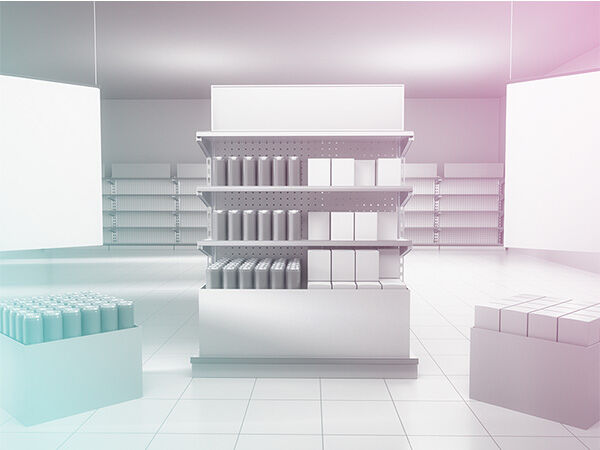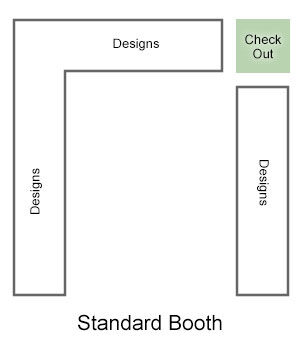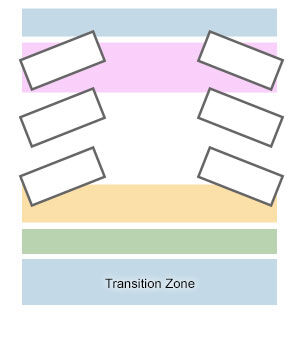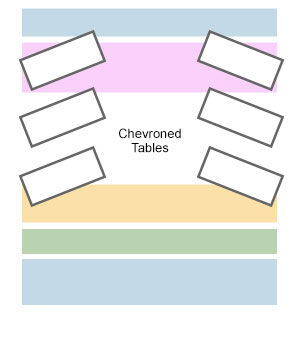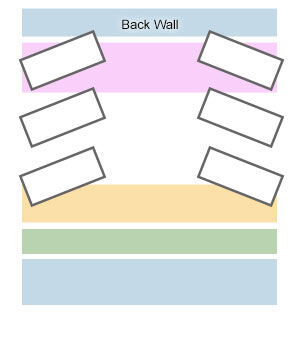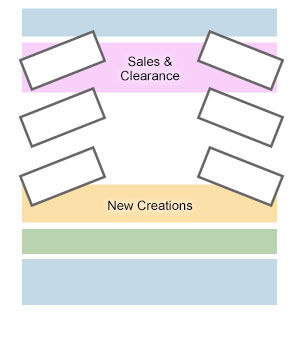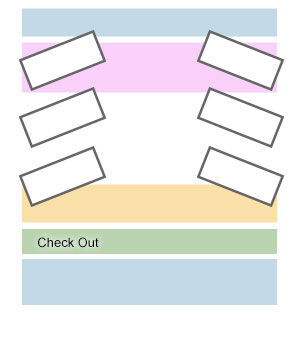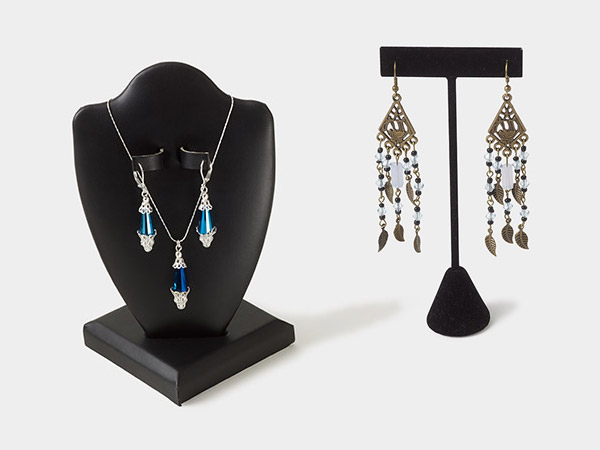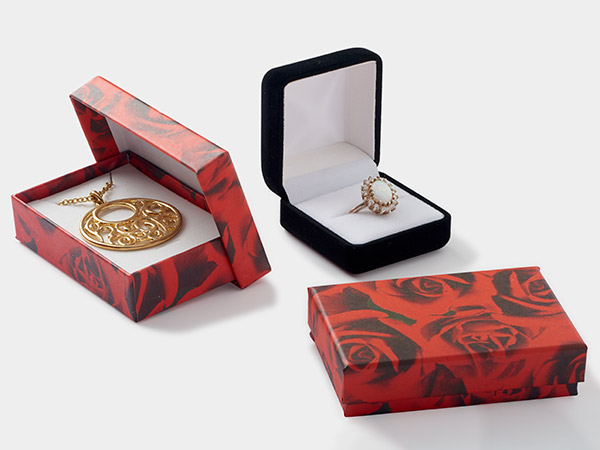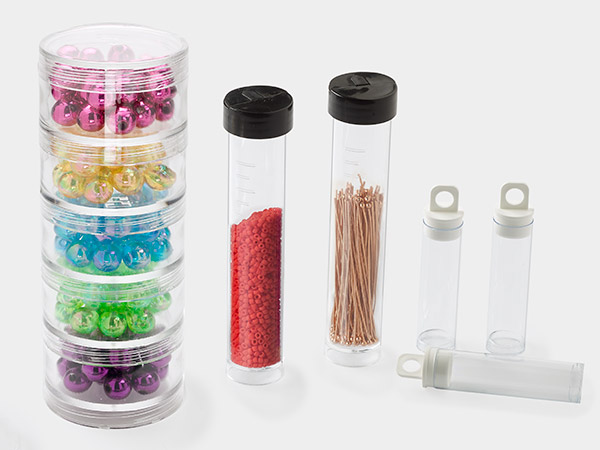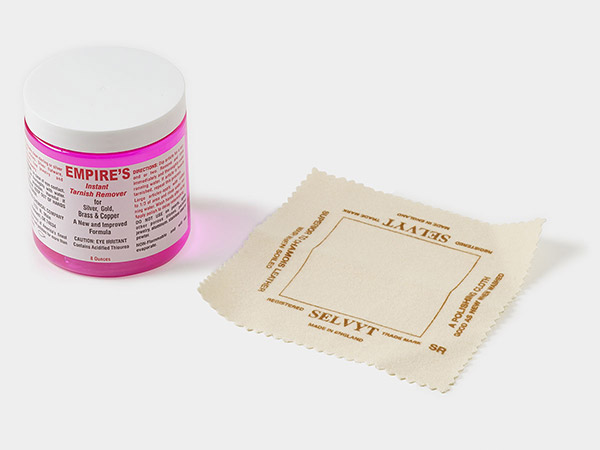Bringing Customers In: Retail Layout Secrets from the Big Box Stores
There is a science to shopping—at least on the side of the big box stores. They hire professional researchers to evaluate how customers shop, what draws them in to shop and how they act and react in various parts of the store. Retail design professionals such as consultant Andrew Andoniadis analyze retail spaces and then help stores create a space that encourages customers to stop, shop and spend.
Now, so can you.
Part One: The Science Behind Shopping
When you walk into a store, you will find tempting new products, hot and trendy items and expensive items to the right. Researchers have discovered that most people turn right when they enter a store because most people are right-handed, points out Paco Underhill, author of Why We Buy: The Science of Shopping. The products on the right will be the first items a shopper will pick up, when they have their entire budget ahead of them, and these are the most difficult items to put back if shopper's remorse sets in.
The goal of any sales space is to turn a potential customer into a purchasing customer. The key to creating a purchasing customer is to make your potential customers slow down, enjoy looking, crave your products and feel comfortable buying. Underhill and Andoniadis have some common suggestions that help retailers with shopping spaces of all sizes sell their products:
- Linger a little longer...
Get customers to linger in your booth. The more time they spend in your space, the more likely they are to find something they want to take home with them. This is influenced by booth layout and the way you, as the designer and booth owner, act toward them.
- Impulse buys and incremental sales
Impulse buys are items that the customer finds easy to pick up and buy. These are usually economical small pieces that might go with or increase the utility of the purchase they're making. Incremental sales are additional items that the customer hadn't originally planned to purchase but chose to after seeing the rest of your designs.
- Using brand identity, local color and seasonal design
Have a consistent element in your displays and backdrops so that your customers recognize your work. Depending on where your store or other retail space is located, you can incorporate items from the local area into your backdrops with your brand colors. If your hometown is famous for a particular product or natural landmark, echo it in your booth design. This can be subtle or obvious. It can be especially good for areas with a high volume of tourist traffic, who are looking for a unique souvenir to commemorate their trip or experience.
For example, our hometown of Grants Pass, Oregon, is famous for the Rogue River and river rafting. Give customers a sense of place by displaying jewelry with river rocks, on images of whitewater rapids or draping over a miniature raft.
Selling by the beach? Add sand, glass floats and other elements to your space. Marketing to the holiday crowd? Entice customers with wintery elements such as snowflakes in your brand color(s). Bring in natural elements that can be painted and adapted to match your brand. The best part of using pieces from the natural world is that you can't beat the price! Promote gift-gifting holidays by using the same color or theme packaging [https://www.firemountaingems.com/tools/packaging] in your display that you put a customer's purchase in.
- Seeing into and moving through a booth
The outside tables of a booth get a vast majority of the shopping activity. Drawing customers inside the booth space allows them to see the entire range of your work and gives them a chance to connect with you, the designer-artist. Creating that connection encourages customer comfort—and encourages customer spending.
At bazaars and crafts fairs, most shoppers are moving through the booths as quickly as they can. They want to see everything before they run out of energy, time or money. Break through that single-minded focus by making your booth a comfortable and attractive place where they want to linger. When you've done that, your creations can change a potential customer into a purchasing customer.
Part Two: Making the Science Work for You
There are a few steps to take when applying the science of shopping to your booth. The first step is to create a floor plan that uses distinct areas to encourage customers to browse—and to buy.
The first question you need answered is are you selling wholesale or retail? They are very different types of customers and you'll need to respond to those differences:
- Wholesale
At a wholesale show, the buyers are professionals doing their job. Your task at a wholesale show is to make the buyer's job as easy and appealing as possible. Making a buyer comfortable in your booth will go a long way to making a sale. What does "comfortable" mean? A thick rug and cushion matting under it, a place to sit with the artist to work out details of an order and small bottles of water are ideas to start with.
In addition, wholesale shows have different needs for what stock you bring. As Donald Clark says in Handmade Business magazine, "Buyers don't need to see multiples of the same object; they do, however, need to see all the available color-ways. Most stores use displays to tell a story that will help sell the work. It's important to show your buyers the stories they can tell [to sell] your work, so let this drive your displays."
- Retail
Retail shows (including craft fairs and bazaars) have visitors who are there for fun. Your task at a retail show is to turn those visitors into customers, whether they're buying a gift or something for themselves. They are looking for an experience and a memento of that experience. Retail shoppers respond to bounty and need to see their options. A retail show benefits from cases filled with rings or rows of necklace displays.
Most of the tips in this article are for selling at retail shows such as craft fairs, artisan markets and holiday bazaars. However, no matter which type of show you're at, ensure you have professional packaging for your designs. This includes specific labels for 14Kt gold, sterling silver or "Handmade in USA," as they are all part of your brand story. Gift bags and presentation boxes impress customers and present a polished brand image and make it easier for shoppers to remember your work when they see you again.
Booth Layout is Vital
Keep in mind that your booth layout is never a finished project, even while you're running it at a bazaar. Like your jewelry-making skill set, it's always a work in progress.
Products need to be re-arranged or restocked to fill holes where purchases have been made. This makes your booth look full of choices, not depleted of desirable items. Mix and match different pieces to refresh your booth's look. This will catch the attention of returning visitors looking for something they've missed.
Here are different areas of a retail space, a brief explanation of their purposes and some questions for you to consider for your own selling space. Finally, each contains a suggestion that can make a booth or sale space pop.
- The Transition Zone
- Booth Floor Plan Suggestions
- Mirrors
- Ambiance
- Product Selection
- Check Out
- And where do I sit?
The Transition Zone
Prospective customers are strolling past your booth, giving your product a cautious glance, hesitant to commit themselves to stopping, entering and potentially buying. Something dramatic has to make them change their minds, something that compels them to want to come closer and explore. Something has to arrest their attention and spark their curiosity, and it has to work quickly—before they move to the next booth.
Stop people in their tracks with what is referred to as the "first fixture"—an unusual or dramatic display meant to grab attention. Customize it to suit your products. Explore the ideas of bold colors, oversized displays, moving components and other techniques. Whatever you choose, make sure it highlights your strengths as an artist. Where do you shine? Is it color? Is it sparkle? Is it complexity? Let your first impression do the talking.
Study similar retail stores that sell goods like yours. Analyze how they attract attention and make it easy to transition from a passerby to a shopper. If their strategies resonate with you, chances are they'll appeal to customers who share your mindset.
Suggestion: If you make large, complex and colorful necklaces, then create a matching bracelet, brooch and pair of earrings. Place all pieces on a sleek, high-contrast, human-shaped display at the front of your booth. This invites onlookers to imagine themselves wearing your creations.
Booth Floor Plan Suggestions
Most booths are laid out in a large inverted "U" shape, with one table on each side and a table against the back wall. Therefore, after a while, all booths start to look the same. Draw attention with a different layout.
Chevroned Tables
Optimize visibility by placing tables, shelves or racks at an angle instead of using the traditional up-against-the-wall layout. This means that more of each shelf's contents are exposed to the passersby. This is ideal for larger spaces, where customers have room to maneuver around the displays.
One of the downsides of chevroning is that you can lose about 20% of your stock space. The question you need to ask yourself is whether the enhanced visibility will offset the drawback of displaying fewer items.
Display or Table Height
Your style doesn't stop with the jewelry you make. Incorporate the key elements from your design line(s) into your backdrop and booth display to use up any extra materials and bring the entire space together.
Choose or create display spaces of graduated heights, with the shortest displays at the front and the tallest displays in the back of the booth. This lets your customers quickly see the diversity of your product line at a glance. Displays of different heights can be created with lightweight wood or plastic components, and then covered with a neutral fabric. Customers decide within seconds whether they will walk into your booth. Give them more information so they can make an educated decision.
One of the downsides of varying display height is that your system can be more difficult to pack and transport. This can be avoided by using standardized cubic systems that break down and set up easily.
Space to Shop (or the "Butt-Brush Effect")
Underhill writes about the "butt-brush effect." He states that shoppers, especially women, become uncomfortable after being brushed or touched from behind. These potential customers will stop shopping after two or three bumps because they feel unsafe in the space. Allow for wide enough aisles that browsers are comfortable lingering over your designs—this also makes your booth accessible to potential customers with mobility aids such as crutches, wheelchairs, power scooters, etc. If you're the only booth they can get into, you'll probably be the one they buy from.
One of the downsides to creating space for shoppers is that you may feel like you do not have enough display space. Prevent this by using more of your vertical space with taller displays or by hanging designs or displays from the booth frame.
The Back Wall
The back wall should be the magnet that pulls customers into your selling space. It should be bright and dramatic. This is where your business name should be, at the highest point you can see from outside your booth. If you have an outdoor space with a roof, make sure the edges of the roof do not obstruct onlookers’ view of your name.
If you have access to electric lighting, use it to highlight your back wall. Place displays with bold, dramatic lines throughout this space, with striking designs that can be seen from outside the booth. Where the eyes go, the feet will follow. Make the customer want to wander in and see it all up close.
Mirrors
Mirrors are the "dressing rooms" of your booth. They provide your customers with the opportunity to see themselves wearing your designs. Make sure you have mirrors that are large enough to be used by customers of a variety of heights, including customers in wheelchairs.
Don't limit yourself to just one mirror. Bring and display enough mirrors that potential customers don't have to hunt for one. The longer they have to look for a mirror, the more likely they are to leave without buying—even if they were inclined to. As a bonus, mirrors also bring light into your space, making it appear like a beacon calling to your customers.
Ambiance
- Color
Careful, deliberate color choices are part of your brand. You can create a recognizable identity for your business by using the same color or colors in your selling space, your logo, your business cards, your packaging and all other materials in your booth.
Neutral colors, both light and dark, provide the best backdrops for jewelry pieces. Avoid textured materials on table covers or curtains in order to keep the focus on your creations and not on the booth's design. Bold primary colors should be used only as accents, as large swaths of them can overwhelm both the space and the customer.
- Background Music
Background music can increase sales by adding to the atmosphere you've created in your booth. It helps to blot out other noises and encourages customers to linger and shop. A common pitfall with background music is to play music you like, instead of music that enhances your product. The two are not always the same. Play music that represents what you sell and appeals to your customer base.
Product Selection
If you've looked at retail store layouts, you will have noticed that the newest products are toward the front of the store and the clearance racks and sales bins are always located in the far back of the store.
This is done deliberately, Underhill points out in his book. Big box retail stores want you to be tempted by new trends, colorful displays, sales and promotional items that bring them more income. You have to pass through all of these items on your way to the back of the store to find clearance and sale products. Then, you have to meander through all of them again to get to the checkout. They're betting you'll find something else to purchase on the way out.
- New Creations
Bring your newest creations and put them in the center of your booth. Label them brightly as "New." Placing them in the center of your booth will draw customers past the front door and into your space. This will also encourage one-time customers to come back and see what you've made this time. A repeat customer is one of the best kinds of customer.
- Slow Sellers
Got something that just won't sell? It could be a visibility issue. Intermingle some of your slow-selling pieces with more popular styles. Your customers will see them in a whole new light.
Another alternative for slow sellers is to put them on yourself. After all, if you won't wear a design, why should your customers? Wear a slow seller at a busy bazaar. You're one of your own floor display models, so don't waste the space.
- Sales Bin/Clearance Rack
Eventually, there will be something that just hasn't sold. If you don't wish to disassemble it for components—or can’t—it's time to talk clearance. The clearance areas in major retail stores are messy, poorly marked, poorly organized and difficult to use. Like their placement at the back of the store, this is intentional. Most shoppers don't have time to spend and will turn to the well-organized, clearly marked and more expensive items simply to be finished. Of course, for some shoppers, digging through the sales bin is highly enjoyable and they visit the same stores over and over again because they enjoy "the hunt."
Keep sale items in the back of your booth. That way, customers will have to pass all your other designs before getting to your sale items. Do not tidy up the rack or bin after customers have shuffled through it—especially if you are selling components. Let customers have their fun digging through the chaos.
Check Out
Speed and efficiency are the key points of this area. When a customer is ready to buy, don't keep them waiting. The checkout area should always be easy to find, but unobtrusive. You don't want customers to think about leaving before they've had a chance to see everything in your booth!
Keep some items right next to the checkout area: small, tempting additions that prompt customers to think "I should get some of those..." This is your chance to sell additional items without saying a word.
These products have been called "add-ons," "impulse buys" and "counter sales." Booths selling finished jewelry pieces can offer add-on products such as packets of matching earnuts or earwire safety nuts, extender chains for necklaces, jewelry cleaners and other bonuses.
And where do I sit?
Don't—unless you absolutely have to.
Have you noticed that workers in retail stores are never sitting when they are on the job? That's because customers judge a store by how busy and productive the employees appear. Customers tend to view standing retail workers as approachable and involved in the business of the store. Seated workers appear to customers as standoffish, unapproachable—even unprofessional.
The same principles apply to your selling space. Project a professional, approachable and involved image by remaining on your feet. If you absolutely must sit, a discreet stool behind your checkout area is a good option.
Be sure to smile and do your best to make eye contact with everyone who enters your booth. Let them see how happy you are to see them. A friendly salesperson who loves the product and is genuinely excited by the customer tends to outsell one who lacks passion. Be your own best asset.
Make good use of the techniques that companies have studied for decades. You can adapt these strategies to your own booth or retail space to increase traffic and sales.
Shop for Your Materials Here:
Have a question regarding this project? Email Customer Service.
Copyright Permissions
All works of authorship (articles, videos, tutorials and other creative works) are from the Fire Mountain Gems and Beads® Collection, and permission to copy is granted for non-commercial educational purposes only. All other reproduction requires written permission. For more information, please email copyrightpermission@firemtn.com.
